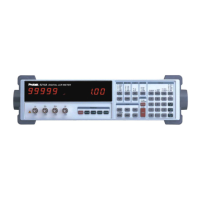In this situation of positive, imaginary impedance, the impedance is purely inductive, as
an ideal inductor would be. The impedance of an ideal inductor with inductance L is a
linear function of frequency, given by Z
L
jL.
If the phase of the voltage is 90 degrees (/2 radians) behind the phase of the current,
then the impedance is a negative imaginary number:
||
||
||
||
2/
I
V
je
I
V
Z
j
(6)
In this situation of negative, imaginary impedance, the impedance is purely capacitive, as
an ideal capacitor would be. The impedance of an ideal capacitor with capacitance C is
the inverse of a linear function of frequency, given by Z
C
1 / jC j /.C.
Actual circuit components are not purely resistive, inductive, or capacitive. Actual ca-
pacitors and inductors have impedances with resistive parts, and their impedances may
not be linear functions of frequency or independent of the voltage. The general expres-
sion for impedance, therefore, considers that it has a real, resistive part R and an
imaginary, reactive part: X:
Z R j X, (7)
Where X L for an inductor and X 1/C for a capacitor. Since the quantity X is
traceable to the ratio of a voltage to a current, it is expressed in ohms. Often, it is desira-
ble to express the impedance in ohms as a scalar (real) quantity; in that case, its
magnitude
is used.
Units
The unit of resistance is the ohm, with the symbol (omega). A 1- resistor produces a
one-volt voltage across it when the current is one ampere.
The unit of inductance is the Henry, with the symbol H. For a one-amp AC current, a
1-H inductor would produce an AC voltage across it whose magnitude is numerically
equal to 2 times the frequency in Hertz.
The unit of capacitance is the Farad, with the symbol F. For a one-amp AC current, a
1-F capacitor would produce an AC voltage across it whose magnitude is numerically
equal to the inverse of 2 times the frequency in Hertz.
Series and Parallel Equivalent Circuits
The impedances of Actual resistors, inductors and capacitors are combinations of re-
sistance, inductance, and capacitance. The simplest models for actual inductors and
capacitors are the series and parallel equivalent circuits shown in Figure 1-1.
For example, the complex impedance of an inductor is
(series equivalent circuit) (8a)
2
/1
/
pp
pppp
pp
pp
LR
LRjRR
LjR
LjR
(parallel equivalent) (8b)

